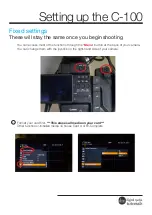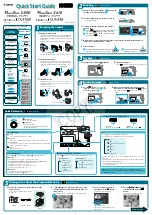
28
More on Photography
Shooting Mode
Shooting Mode Options
Mode
Description
Q
SCENE RECOGNITION
The camera automatically analyzes the composition and selects a scene
according to shooting conditions and the type of subject.
B
AUTO
Choose for crisp, clear snapshots. This mode is recommended in most
situations.
P PROGRAM AE
The camera sets exposure automatically.
G
CINEMAGRAPH
Choose when creating a cinemagraph, which is a still image with a
portion that moves (
P
29).
g
ACTION CAMERA
Record impressive photos and videos of your adventures in wide angle
(
P
33).
j
PRO LOW-LIGHT
Choose when photographing stationary subjects under low light or with
the camera zoomed in (
P
34).
k
HDR
Choose when photographing high-contrast scenes. The camera varies
exposure over a series of shots and blends the results to preserve details
in highlights and shadows (
P
35).
C
NATURAL &
N
The camera takes two shots: one without the flash and one with.
7
MULTIPLE EXPOSURE
Create a photograph that combines two exposures (
P
36).
h
PORTRAIT
Choose for portraits.
M
LANDSCAPE
Choose for daylight shots of buildings and landscapes.
Y
ADVANCED FILTER
Take photos with filter effects (
P
38).
r
MOTION PANORAMA
360
Pan the camera to record a series of shots that are joined together to form
a panorama (
P
39).
N
SPORT
Choose when photographing moving subjects.
O
NIGHT
Choose this mode for poorly lit twilight or night scenes.
H
NIGHT (TRIPOD)
Choose this mode for slow shutter speeds when shooting at night.
Q
SUNSET
Choose this mode to record the vivid colors in sunrises and sunsets.
















































